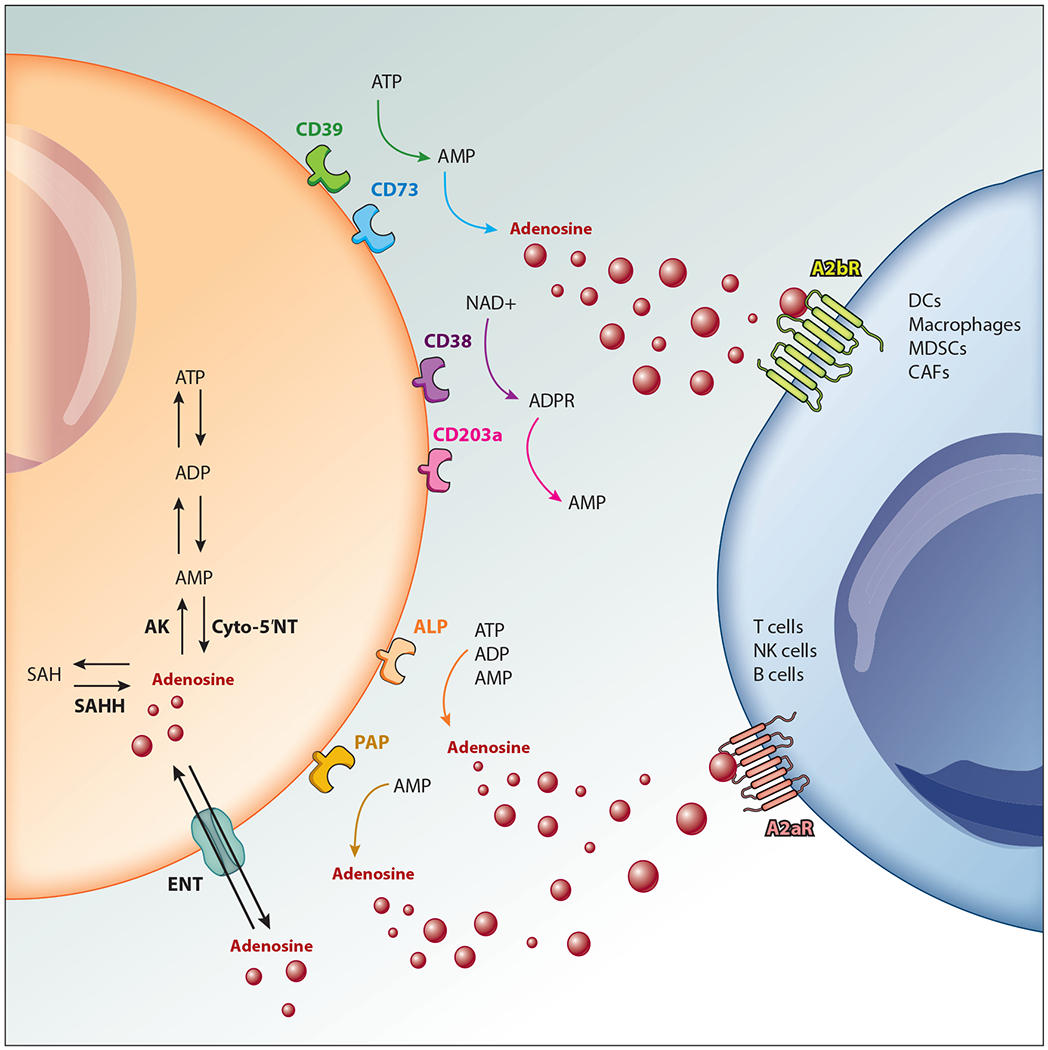Figure 1.

Adenosine production and signaling. Extracellular adenosine is generated in a stepwise process via multiple molecules. CD39 dephosphorylates ATP into AMP, which is then converted into adenosine via CD73. AMP can also be generated via sequential action of CD38 and CD203a. Alternative sources of extracellular adenosine production include alkaline phosphatase (ALP) and prostatic acid peptidase (PAP). Intracellular adenosine is regulated by the balance of the activity of adenosine kinase (AK) and cyto-5′NT/intracellular CD73 or the direct metabolism of S-adenosylhomocysteine (SAH) by the enzyme S-adenosyl-homocysteine hydrolase (SAHH). Adenosine is transported into and out of the cell by equilibrative nucleoside transporters (ENTs) and signals predominantly via A2aR and A2bR on cells within the tumor microenvironment. Other abbreviations: CAF, cancer-associated fibroblast; DC, dendritic cell; MDSC, myeloid-derived suppressor cell; NK, natural killer.
